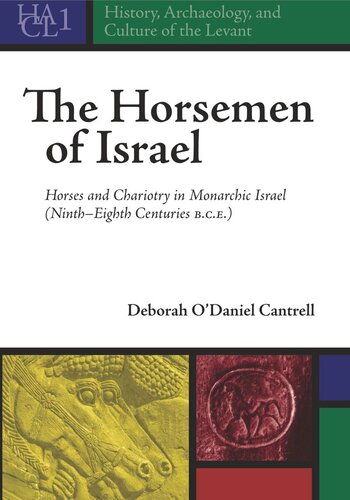

Most ebook files are in PDF format, so you can easily read them using various software such as Foxit Reader or directly on the Google Chrome browser.
Some ebook files are released by publishers in other formats such as .awz, .mobi, .epub, .fb2, etc. You may need to install specific software to read these formats on mobile/PC, such as Calibre.
Please read the tutorial at this link: https://ebookbell.com/faq
We offer FREE conversion to the popular formats you request; however, this may take some time. Therefore, right after payment, please email us, and we will try to provide the service as quickly as possible.
For some exceptional file formats or broken links (if any), please refrain from opening any disputes. Instead, email us first, and we will try to assist within a maximum of 6 hours.
EbookBell Team

4.8
14 reviewsAlmost every book in the Hebrew Bible mentions horses and chariots in some manner, usually in a military context. However, the importance of horses, chariots, and equestrians in ancient Israel is typically mentioned only in passing, if at all, by historians, hippologists, and biblical scholars. When it is mentioned, the topic engenders a great deal of confusion.
Notwithstanding the substantial textual and archaeological evidence of the horse’s historic presence, recent scholars seem to be led by a general belief that there were very few horses in Iron Age Israel and that Israel’s chariotry was insignificant. The reason for this current sentiment is tied primarily to the academic controversy of the past 50 years over whether the 17 tripartite-pillared buildings excavated at Megiddo in the early 20th century were, in fact, stables. Although the original excavators, archaeologists from the University of Chicago, designated these buildings as stables, a number of scholars (and a few archaeologists) later challenged this view and adopted alternative interpretations. After they “reassessed” the Megiddo stables as “storehouses,” “marketplaces,” or “barracks,” the idea developed that there was no place for the horses to be kept and, therefore, there must have been few horses in Israel. The lack of stables, when added to the suggestion that Iron Age Israel could not have afforded to buy expensive horses and maintain an even more expensive chariotry, led to a dearth of horses in ancient Israel; or so the logic goes that has permeated the literature. Cantrell’s book attempts to dispel this notion.
Too often today, scholars ignore or diminish the role of the horse in battle. It is important to remember that ancient historians took for granted knowledge about horses that modern scholars have now forgotten or never knew. Cantrell’s involvement with horses as a rider, competitor, trainer, breeder, and importer includes equine experience ranging from competitive barrel-racing to jumping, and for the past 25 years, dressage. The Horsemen of Israel relies on the author’s knowledge of and experience with horses as well as her expertise in the field of ancient Near Eastern languages, literature, and archaeology.